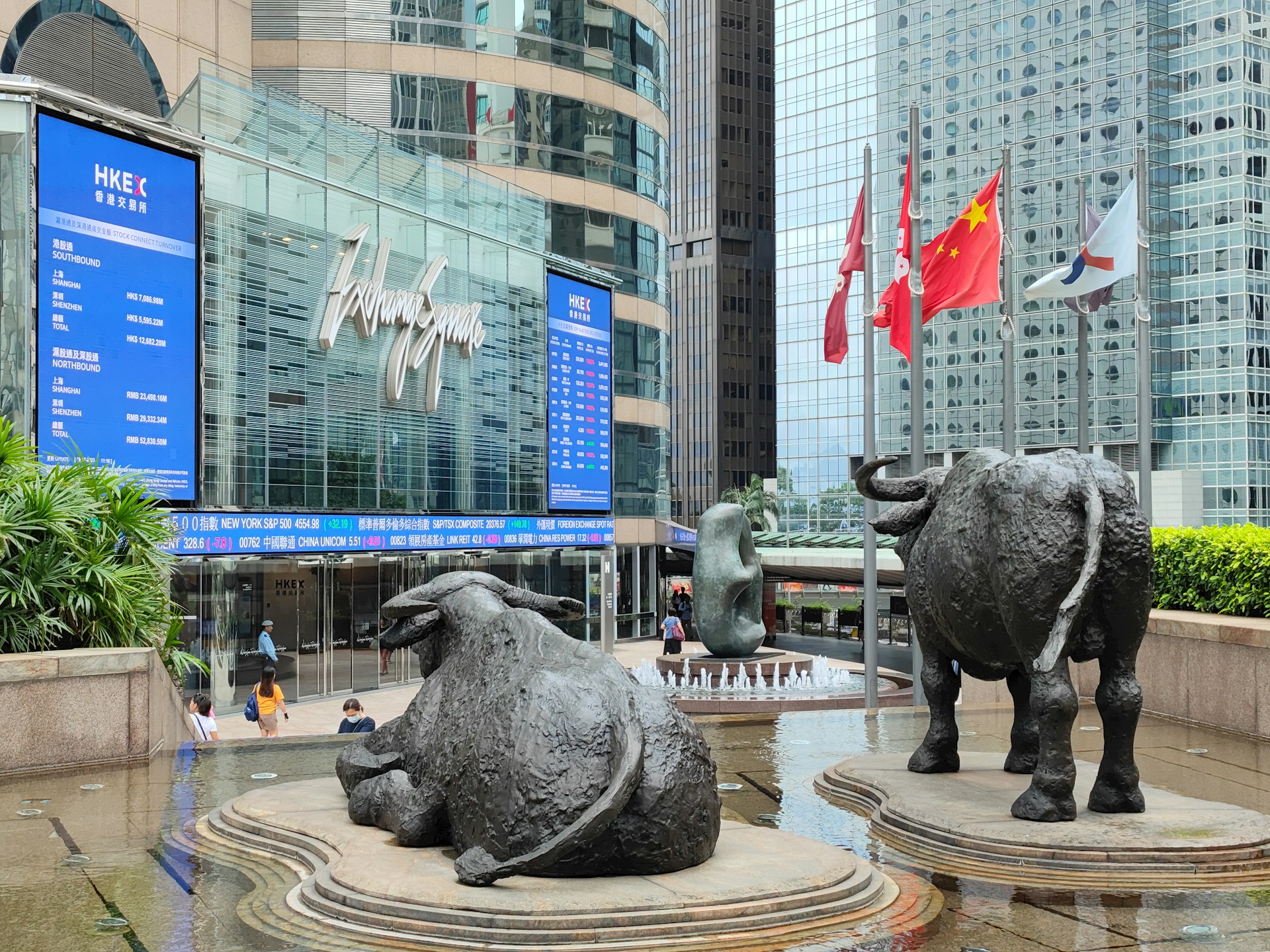Hong Kong opened the week with a clean pivot back to risk. Markets read Jerome Powell’s latest remarks as a credible hint that the Federal Reserve could ease as soon as September, which lowered the global discount rate and handed duration assets an early boost. The Hang Seng Index rose 1.2 percent to 25,642.70 at 9:50 am local time. Tech outperformed, with the Hang Seng Tech Index up 1.8 percent. Mainland gauges moved in tandem, with the CSI 300 up 0.8 percent and the Shanghai Composite Index up 0.6 percent. In stock specifics, Zijin Mining climbed 5.1 percent to HK$24.04, Semiconductor Manufacturing International Corporation added 3.0 percent to HK$58.55, Baidu gained 3.7 percent to HK$88.85, NetEase advanced 3.3 percent to HK$212.00, and JD.com rose 2.8 percent to HK$124.80. The pattern fits a classic rate-sensitive rotation, where cash flows that sit further out on the horizon are quickly repriced when policy risk eases.
What matters is not that the Fed may cut, but why the signal arrived. Investors are reading a softer US labor market and ebbing inflation pressures as the catalyst. If true, the global rate path is flattening, the dollar’s impulse can weaken, and foreign buyers who were underweight China and North Asia have room to add. Hong Kong’s rally today expresses that optionality. It is a relief bid that narrows the policy divergence between the United States and Asia, even as China’s domestic cycle remains uneven.
The sector mix tells the same story. Miners rally first when the market re-prices global growth and dollar direction together, since a softer dollar often supports commodities while lower rates raise the present value of long-dated projects. Tech follows because lower policy rates reduce equity risk premiums for platforms with high operating leverage to sentiment. SMIC’s bounce reflects a second theme. Semiconductor capacity in China continues to benefit from import substitution and policy visibility, so the multiple is as much a function of strategic capital as it is of earnings revisions. The Fed’s tone does not change that narrative, but it does make the global cost of capital less punitive for a period.
The mainland’s steady bid is important for Hong Kong liquidity. When onshore indices firm, Southbound flows typically stabilize, and that cushions volatility in offshore names with primary revenue in China. A dovish Fed also alleviates pressure on Asian central banks that have been reluctant to follow the US higher for fear of growth damage. If the dollar eases, local authorities can focus more on domestic transmission rather than FX defense, which supports equity beta across the region. In that set-up, Hong Kong becomes the operational proxy for investors who want China exposure with more flexible governance and disclosure.
None of this erases the structural questions that have capped Hong Kong’s rallies over the past two years. Property inventory overhangs, local consumption that has lagged historical post-pandemic patterns, and patchy private investment still weigh on earnings visibility. The Fed’s signal reduces the headwind from rates; it does not generate household confidence in Shenzhen or Guangzhou, and it does not solve margin compression where competition remains intense in e-commerce and online services. That is why today’s move looks orderly rather than euphoric. The market is pricing a lower hurdle rate, not a sudden surge in top-line growth.
For operators and portfolio strategists, the more interesting shift sits in cross-market leadership. The last phase of the global AI trade rewarded US megacaps that combined scale with supply chain priority. A tangible Fed pivot would redistribute some risk budget toward under-owned Asia names that have lagged despite improving micro. Baidu’s and NetEase’s moves hint at that rebalancing. Search and games are not new stories, but they do throw off cash and can use cheaper capital to pursue incremental product upgrades or content rights with less balance sheet strain. If the dollar softness sustains, those cash flows translate more cleanly for foreign holders.
The other watchpoint is Hong Kong’s role as a financing hub for Chinese industrial policy priorities. If global rates fall, project finance math for energy transition metals, specialty chemicals, and upstream equipment improves. Zijin’s outperformance is a reminder that the city still intermediates capital to where China’s next cycle is likely to grind higher: capacity that supports resilience and security. That pipeline is sensitive to the term structure of rates and to geopolitical clarity. A calmer rate backdrop helps, and a calmer policy backdrop would help more.
Near term, positioning may do more work than fundamentals. Many global allocators reduced China and Hong Kong exposure in favor of the US and India, and the relative performance gap widened. A credible US easing path invites at least partial rotation into markets where valuation, currency risk, and policy direction look less asymmetric than they did in the first half. If that rotation extends, liquidity in Hong Kong improves and earnings misses are tolerated, provided guidance converges upward and cost discipline holds. If US data re-accelerates and pushes the Fed off the September track, today’s bid will fade quickly and the market will revert to stock-picking inside a narrow index range.
For now, the signal is enough. Hong Kong stocks rise after Powell rate cut signal because the cost of waiting has fallen and the penalty for holding duration has eased. Tech and miners are the natural early winners, and mainland strength provides a stabilizer for flows. The sustainability of this move depends on confirmation from the next US data prints and on domestic credibility in China. If both line up, the trade evolves from relief to re-rating. If they do not, today will read as disciplined repositioning rather than the start of a new cycle.







.jpg&w=3840&q=75)






